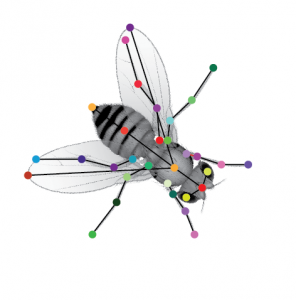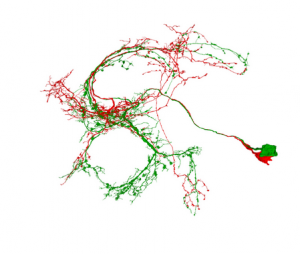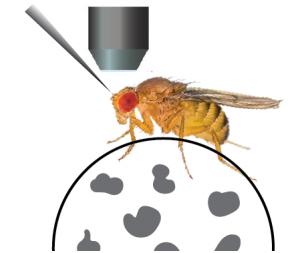

Since social behaviors are critical for survival, animals have evolved complex and hard-wired neural circuits to orchestrate the performance of innate behaviors. Yet – the brain must also be flexible enough to allow adaptive decisions in changing environments. We aim to dissect mechanisms that underlie adaptive social communication over multiple timescales. Toward this goal, we will build models of how factors such as previous experience, internal motivational state, and immediate social context, shape the dynamic social communication.
To reveal the mechanisms underlying complex social communication at the circuit, cellular, and molecular levels, we need a model system with a rich behavioral repertoire, a tractable nervous system and a wide range of tools for monitoring and manipulating specific cells and molecular pathways. Therefore, we choose the vinegar fly Drosophila melanogaster as a model system.

The flexibility in the circuit allows the same stimuli to drive different behavioral responses, based on context, internal state, and previous experience. Specifically, we focus on the following questions:
1. How does environmental context (e.g., other flies or food sources) modulate social communication?
2. How do persistent internal states (such as mating drive) interact with social cues to influence the behavioral response and neural activity?
3. How does previous experience (e.g., social isolation or previous encounters) modulate social communication?

With about 100,000 neurons in its central brain, the fly performs complex behaviors such as mating and fighting. However, its nervous system is simple enough for researchers to tie such behaviors to specific brain circuits, including cells and synapses. Via an expansive genetic toolkit we are now able to systematically manipulate and probe virtually any neuron in the fly nervous system. The full connectome of an adult fly (meaning, all the neurons and the synaptic connections between them) is becoming available in the adult fly. This accelerates our ability to systematically explore how different cells work in concert to implement specific computations. Machine-learning based approaches are now available for fine quantification of fly behavior. Combining behavioral quantification with precise spatiotemporal control of specific cells, in brains of intact socially communicating flies facilitates the association between specific behaviors and specific circuit nodes.

We use a multisensory virtual reality environment to probe brain dynamics in a behaving fly using two-photon microscopy and electrophysiology. Thanks to the small size of the fly, we can scan the entire fly brain to analyze whole-brain neural dynamics. Simultaneously, we can manipulate specific cells and present complex natural stimuli, to study the link between neural functioning and behavior. Last, we use modeling tools to link circuit motifs to computations, aiming to reveal general computational principals deployed by a simple nervous system with the goal of generalizing across systems.
We believe that such an integrated approach will allow us to dive into one of the most fascinating questions in neurobiology: how do brains give rise to social communication?